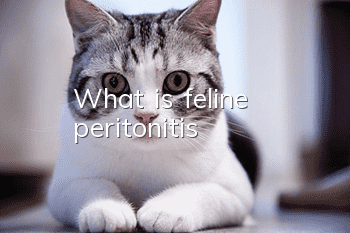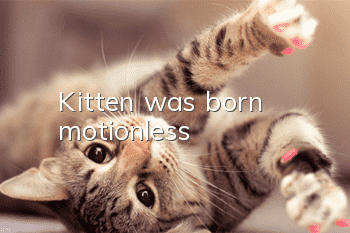What is feline peritonitis

Feline peritonitis is a disease caused by cats infected with feline coronavirus and is extremely contagious. Feline peritonitis is divided into wet and dry types. Cats suffering from wet peritonitis will die within two months of onset. Cats with dry peritonitis will have symptoms such as weight loss and cloudy eyes, and a few will be accompanied by multiple progressive neurological symptoms.
CatTypes of peritonitis:
1. Feline infectious peritonitis:
Feline infectious peritonitis is an infection of cats with coronavirus Diseases caused by viruses have a very high infection rate. It is generally considered to be an infection through the mouth and nose. Cats that carry the virus will excrete the virus through their feces, and carrier cats will excrete the virus through their feces and infect cats living together; a small number of viruses can be transmitted through mechanical means such as clothing, food dishes, bedding, people, or insects.
2. Wet peritonitis:
More cats die within two months of onset. There is high protein exudate in the chest and abdomen. Depending on the amount of pleural effusion, symptoms may range from asymptomatic to wheezing or dyspnea. Progressive painless abdominal enlargement and male cats may have an enlarged scrotum. Vomiting or diarrhea may occur. Moderate to severe anemia. On clinical examination, it will be found that the muscles on both sides of the spine are progressively weakened and thinned, and the abdomen is progressively enlarged.
3. Dry peritonitis:
Dry type mainly causes pyogranulomatous lesions of organs. Cats will show progressive weight loss, eye opacity, pyometra, and miosis. , visual impairment and other symptoms. A small number of cases are accompanied by multiple progressive neurological symptoms, including hindquarter paralysis, spasmodic tremors, nystagmus, and personality changes. Nodular lesions appear in the liver, kidneys, spleen, lungs, omentum and lymph nodes, and mesenteric lymph node nodules can be palpated in the abdomen. Anemia, jaundice.
- Practical tips for bathing your cat
- How to make cats drink more water
- Which ointment is better for treating ringworm in cats?
- How to make a cat more obedient? Let it remember its name!
- What are the benefits of cats basking in the sun? Things to note when cats are basking in the sun
- Is it true that a cat can be trapped by drawing a circle on the ground?
- Pet owners should remember the symptoms and treatment of postpartum calcium deficiency in cats!
- Do you know the symptoms of cat rabies? How to treat cat rabies!
- How to keep a cat from destroying everything in the house and tame a well-disciplined cat?
- Why is the cat coughing and retching?



